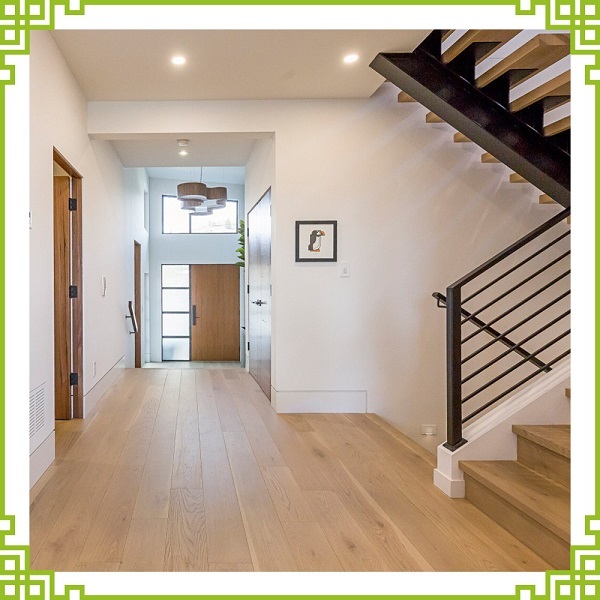A Comprehensive Guide: How to Purchase High Quality White Oak Flooring
White oak flooring stands as a classic choice, renowned for its durability, versatility, and timeless elegance. When embarking on the journey of purchasing white oak flooring, it's essential to understand the factors that contribute to its quality. In this guide, we'll explore key considerations and provide valuable insights to help you make an informed decision and ensure you acquire top-notch white oak flooring that enhances your space for years to come. White oak has a light to medium brown color with subtle gray undertones, giving it a cooler hue compared to red oak. It features a straight and consistent grain pattern with fewer variations and knots, lending it a more uniform appearance. This makes it an excellent choice for contemporary and traditional interiors alike. Its tight grain structure makes it less prone to scratches and dents compared to other hardwood species.
1. Understand White Oak: Before diving into the purchasing process, familiarize yourself with white oak and its characteristics. White oak, scientifically known as Quercus alba, is a hardwood species native to North America. It boasts a light to medium brown hue with subtle gray undertones, along with a straight and consistent grain pattern. White oak is prized for its exceptional hardness, durability, and resistance to moisture and rot, making it an ideal choice for flooring applications.
2. Assess Grade and Appearance: White oak flooring is available in various grades, each with its unique characteristics. The grading system typically includes clear, select, and common grades, which vary in terms of knot presence, color variation, and overall appearance. Clear grade exhibits minimal knots and color variation, lending a sleek and uniform look, while common grade may feature more knots and color variation, adding character and rustic charm. Select grade falls between clear and common, offering a balance of consistency and natural variation. Consider your aesthetic preferences and the desired ambiance of your space when selecting the grade of white oak flooring.
3. Evaluate Finish and Surface Treatment: The finish and surface treatment of white oak flooring play a crucial role in both aesthetics and durability. Opt for flooring with a durable finish that provides protection against scratches, stains, and moisture. Common finish options include polyurethane, oil-based, and water-based finishes, each offering unique advantages in terms of appearance and performance. Additionally, consider surface treatments such as wire brushing or hand-scraping, which enhance the texture and visual interest of the flooring. White oak flooring can be finished in a variety of ways to achieve different looks and levels of sheen. It can be left unfinished for a natural, rustic appearance or stained to enhance its color.
4. Check for Quality Construction: Examine the construction of white oak flooring to ensure superior quality and longevity. Look for flooring boards that are kiln-dried to the appropriate moisture content, typically between 6% to 9%, to prevent warping, cupping, or shrinking after installation. Verify that the boards are milled precisely with tight tongue-and-groove joints for seamless installation and optimal stability. Inspect the thickness and width of the flooring boards to ensure they meet your structural and aesthetic requirements.
5. Consider Sustainability and Certification: When purchasing white oak flooring, prioritize products sourced from responsibly managed forests and certified by reputable organizations such as the Forest Stewardship Council (FSC) or the Sustainable Forestry Initiative (SFI). These certifications ensure that the wood is harvested ethically and sustainably, minimizing environmental impact and supporting conservation efforts.
Solid white oak planks are made from a single piece of wood and can be sanded and refinished multiple times, providing long-term durability. Engineered white oak consists of multiple layers of wood with a hardwood veneer on top and offers added dimensional stability, making it suitable for installation in areas with moisture concerns. Investing in high-quality white oak flooring is a decision that enhances the beauty, durability, and value of your home. By understanding key considerations such as grade, finish, construction, and sustainability, you can confidently select white oak flooring that meets your aesthetic preferences, functional needs, and ethical standards. With proper care and maintenance, your white oak flooring will continue to adorn your space with timeless elegance and enduring beauty for generations to come.




 皖公网安备 34180202000049号
皖公网安备 34180202000049号